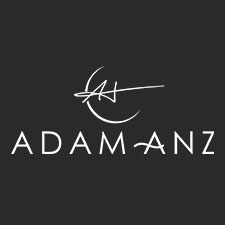Post Op Introduction
ACL surgery is an intensive procedure that requires time to recover from. The information below will guide you on your recovery journey. If you have any questions after your surgery don’t hesitate to reach out to our staff.
Post Op Protocol
PAIN
o Most patients require some narcotic medication after surgery. You will be given a prescription(s) with instructions for its use. Do not take more than prescribed. If your pain is not adequately controlled, contact the surgeon on call. Phone numbers are provided.
o If you had a nerve block done by anesthesia, please contact Dr. Swenson with questions. He will provide you with the contact information. When the nerve block wears off, pain can increase so you may notice you will need more oral narcotics at that time.
o Common side effects of the narcotics include nausea, vomiting, drowsiness, constipation, and difficulty urinating. If you experience constipation, use an over the counter laxative. Minimize the risk of constipation by staying well hydrated and including fiber in your diet. If you have difficulty urinating, try spending a little time out of bed on the crutches. If it is not possible for you to urinate and you become uncomfortable, it is best if you go to the Emergency Room to get catheterized.
o Contact the office if you have nausea and vomiting. This is usually caused by the anesthesia or narcotics. We will either give you a medication for nausea at time of surgery or we will call it in to a pharmacy if you experience these symptoms.
o Do not drive or make important business decisions while using narcotics. o Anti-inflammatories (advil, naprosyn, aleve, etc) may be taken in conjunction with the pain medication to help reduce the amount of narcotics needed. Do not take extra Tylenol if the pain medication given to you already has Tylenol in it.
WOUND CARE
o You may remove the Operative Dressing on Post-Op Day #2
o KEEP THE INCISIONS CLEAN AND DRY.
o Apply Gauze bandage to the wounds. Change daily. Do not remove the Steri-strips. Please do not use Bacitracin or other ointments under the bandage.
o An ACE wrap may be used to help control swelling. Do not wrap the ACE too tight. You may be given a stockinette to place over your wound and under the brace – this is to help alleviate sweating under the brace.
o There may be a small amount of bleeding and/or fluid leaking at the surgical site. This is normal. The knee is filled with fluid during surgery, sometimes causing leakage for 24- 36 hours. You may change or reinforce the bandage as needed.
o Use Ice or the Cryocuff as often as possible for the first 3-4 days, then as needed for pain relief. Do not wrap the Ace too thickly or the Cryocuff cold may not penetrate.
o There will actually be more swelling on days 1-3 than you had the day of surgery. This is normal. The swelling is decreased by using Ice or the Cryocuff. The swelling will make it more difficult to bend your knee, but once the swelling goes down, it will become easier to bend your knee. o You may shower on Post-Op Day #3 using a water-tight plastic bag over your knee. DO NOT GET THE WOUND WET. You may gently wash around the incision with a washcloth, then gently pat the area dry. Do not soak the knee in water. Do not go swimming in the pool or ocean until your sutures are removed.
Surgical Procedure:
Lorem ipsum dolor sit amet, consectetur adipiscing elit. Ut elit tellus, luctus nec ullamcorper mattis, pulvinar dapibus leo.
For additional information on revision ACL reconstruction surgery, or to learn more about common knee injuries involving one or more ligaments within the knee, please contact the Gulf Breeze, Florida orthopedic surgeon, Dr. Adam Anz located at the Andrews Institute.
Sources:

